Xiatian Zhang
Pose-based Tremor Type and Level Analysis for Parkinson's Disease from Video
Dec 21, 2023Abstract:Purpose:Current methods for diagnosis of PD rely on clinical examination. The accuracy of diagnosis ranges between 73% and 84%, and is influenced by the experience of the clinical assessor. Hence, an automatic, effective and interpretable supporting system for PD symptom identification would support clinicians in making more robust PD diagnostic decisions. Methods: We propose to analyze Parkinson's tremor (PT) to support the analysis of PD, since PT is one of the most typical symptoms of PD with broad generalizability. To realize the idea, we present SPA-PTA, a deep learning-based PT classification and severity estimation system that takes consumer-grade videos of front-facing humans as input. The core of the system is a novel attention module with a lightweight pyramidal channel-squeezing-fusion architecture that effectively extracts relevant PT information and filters noise. It enhances modeling performance while improving system interpretability. Results:We validate our system via individual-based leave-one-out cross-validation on two tasks: the PT classification task and the tremor severity rating estimation task. Our system presents a 91.3% accuracy and 80.0% F1-score in classifying PT with non-PT class, while providing a 76.4% accuracy and 76.7% F1-score in more complex multiclass tremor rating classification task. Conclusion: Our system offers a cost-effective PT classification and tremor severity estimation results as warning signs of PD for undiagnosed patients with PT symptoms. In addition, it provides a potential solution for supporting PD diagnosis in regions with limited clinical resources.
Correlation-Distance Graph Learning for Treatment Response Prediction from rs-fMRI
Nov 17, 2023



Abstract:Resting-state fMRI (rs-fMRI) functional connectivity (FC) analysis provides valuable insights into the relationships between different brain regions and their potential implications for neurological or psychiatric disorders. However, specific design efforts to predict treatment response from rs-fMRI remain limited due to difficulties in understanding the current brain state and the underlying mechanisms driving the observed patterns, which limited the clinical application of rs-fMRI. To overcome that, we propose a graph learning framework that captures comprehensive features by integrating both correlation and distance-based similarity measures under a contrastive loss. This approach results in a more expressive framework that captures brain dynamic features at different scales and enables more accurate prediction of treatment response. Our experiments on the chronic pain and depersonalization disorder datasets demonstrate that our proposed method outperforms current methods in different scenarios. To the best of our knowledge, we are the first to explore the integration of distance-based and correlation-based neural similarity into graph learning for treatment response prediction.
Towards Graph Representation Learning Based Surgical Workflow Anticipation
Aug 07, 2022
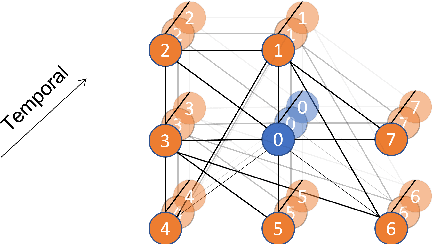

Abstract:Surgical workflow anticipation can give predictions on what steps to conduct or what instruments to use next, which is an essential part of the computer-assisted intervention system for surgery, e.g. workflow reasoning in robotic surgery. However, current approaches are limited to their insufficient expressive power for relationships between instruments. Hence, we propose a graph representation learning framework to comprehensively represent instrument motions in the surgical workflow anticipation problem. In our proposed graph representation, we maps the bounding box information of instruments to the graph nodes in the consecutive frames and build inter-frame/inter-instrument graph edges to represent the trajectory and interaction of the instruments over time. This design enhances the ability of our network on modeling both the spatial and temporal patterns of surgical instruments and their interactions. In addition, we design a multi-horizon learning strategy to balance the understanding of various horizons indifferent anticipation tasks, which significantly improves the model performance in anticipation with various horizons. Experiments on the Cholec80 dataset demonstrate the performance of our proposed method can exceed the state-of-the-art method based on richer backbones, especially in instrument anticipation (1.27 v.s. 1.48 for inMAE; 1.48 v.s. 2.68 for eMAE). To the best of our knowledge, we are the first to introduce a spatial-temporal graph representation into surgical workflow anticipation.
Pose-based Tremor Classification for Parkinson's Disease Diagnosis from Video
Jul 14, 2022
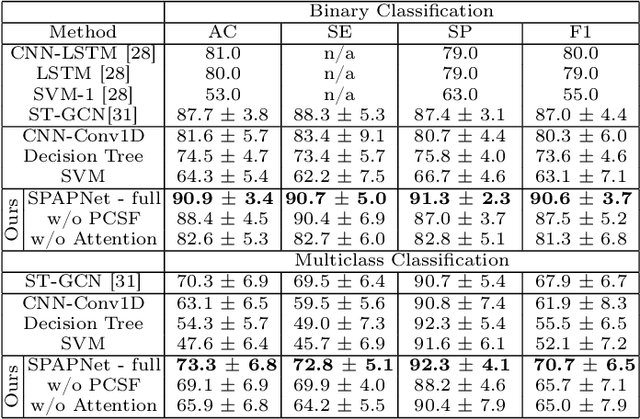

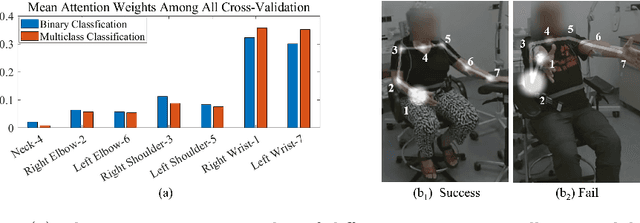
Abstract:Parkinson's disease (PD) is a progressive neurodegenerative disorder that results in a variety of motor dysfunction symptoms, including tremors, bradykinesia, rigidity and postural instability. The diagnosis of PD mainly relies on clinical experience rather than a definite medical test, and the diagnostic accuracy is only about 73-84% since it is challenged by the subjective opinions or experiences of different medical experts. Therefore, an efficient and interpretable automatic PD diagnosis system is valuable for supporting clinicians with more robust diagnostic decision-making. To this end, we propose to classify Parkinson's tremor since it is one of the most predominant symptoms of PD with strong generalizability. Different from other computer-aided time and resource-consuming Parkinson's Tremor (PT) classification systems that rely on wearable sensors, we propose SPAPNet, which only requires consumer-grade non-intrusive video recording of camera-facing human movements as input to provide undiagnosed patients with low-cost PT classification results as a PD warning sign. For the first time, we propose to use a novel attention module with a lightweight pyramidal channel-squeezing-fusion architecture to extract relevant PT information and filter the noise efficiently. This design aids in improving both classification performance and system interpretability. Experimental results show that our system outperforms state-of-the-arts by achieving a balanced accuracy of 90.9% and an F1-score of 90.6% in classifying PT with the non-PT class.
Distributed Learning with Low Communication Cost via Gradient Boosting Untrained Neural Network
Nov 10, 2020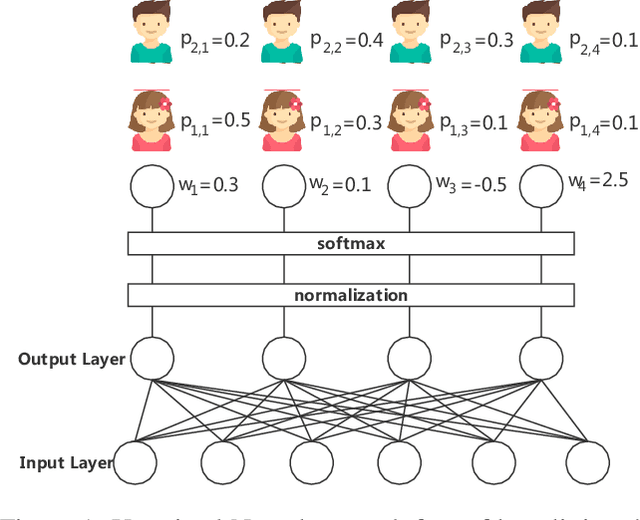

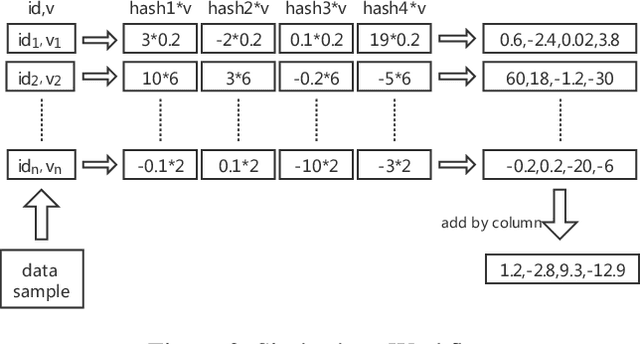
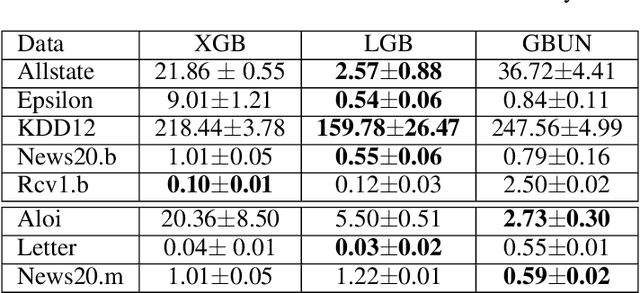
Abstract:For high-dimensional data, there are huge communication costs for distributed GBDT because the communication volume of GBDT is related to the number of features. To overcome this problem, we propose a novel gradient boosting algorithm, the Gradient Boosting Untrained Neural Network(GBUN). GBUN ensembles the untrained randomly generated neural network that softly distributes data samples to multiple neuron outputs and dramatically reduces the communication costs for distributed learning. To avoid creating huge neural networks for high-dimensional data, we extend Simhash algorithm to mimic forward calculation of the neural network. Our experiments on multiple public datasets show that GBUN is as good as conventional GBDT in terms of prediction accuracy and much better than it in scaling property for distributed learning. Comparing to conventional GBDT varieties, GBUN speeds up the training process up to 13 times on the cluster with 64 machines, and up to 4614 times on the cluster with 100KB/s network bandwidth. Therefore, GBUN is not only an efficient distributed learning algorithm but also has great potentials for federated learning.
Greedy Step Averaging: A parameter-free stochastic optimization method
Nov 11, 2016
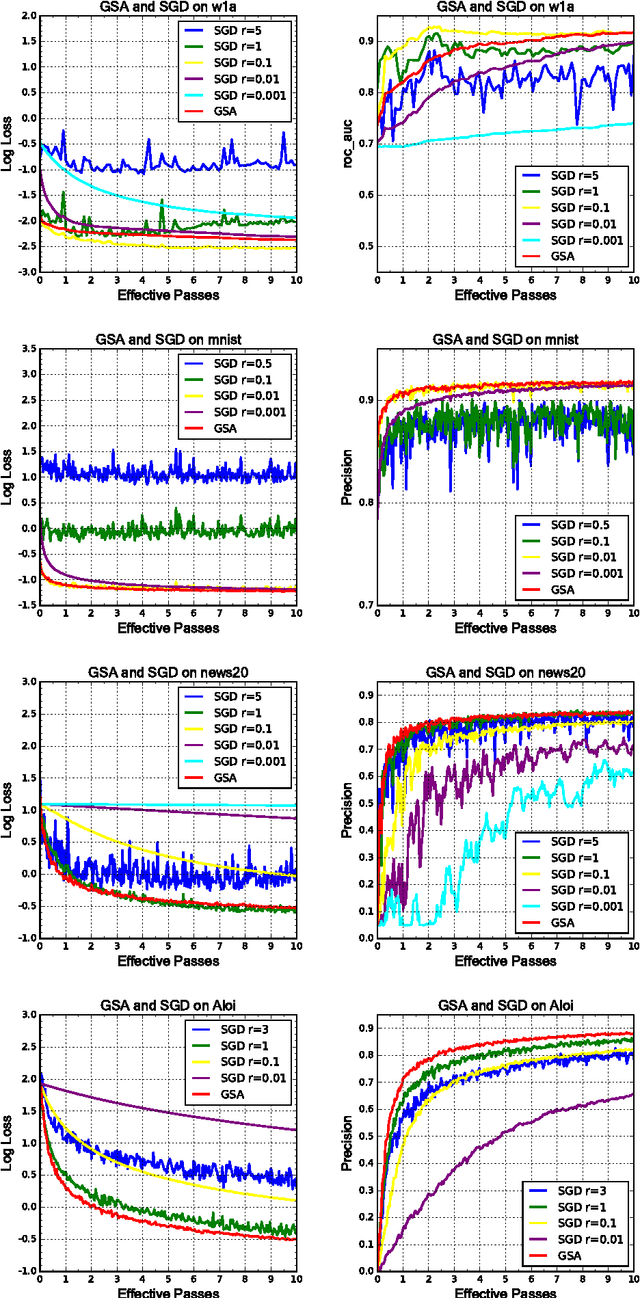
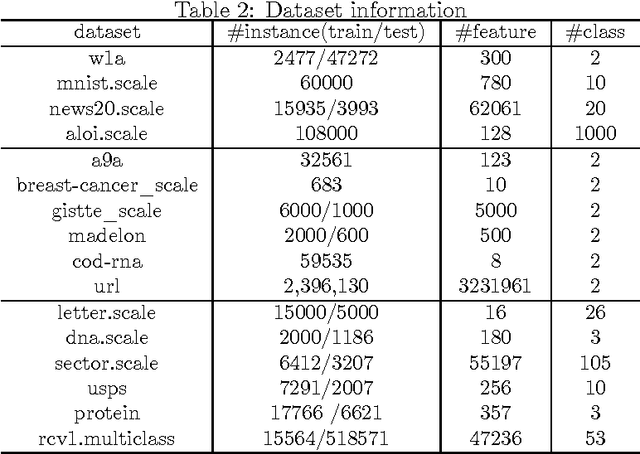
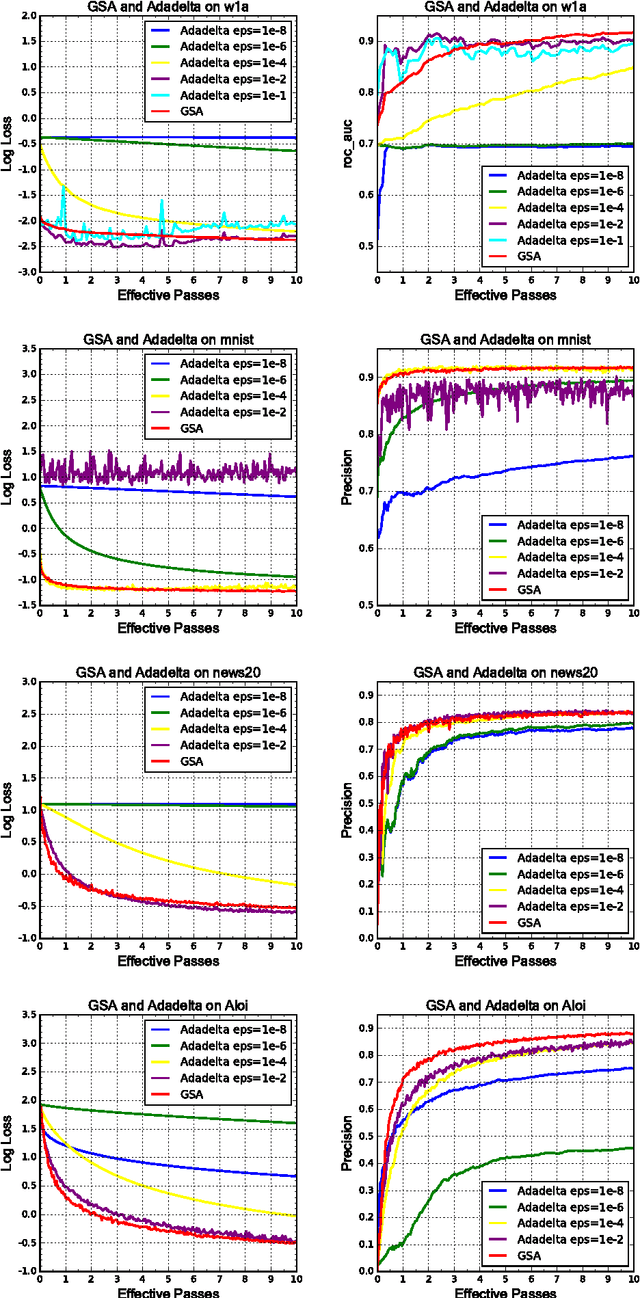
Abstract:In this paper we present the greedy step averaging(GSA) method, a parameter-free stochastic optimization algorithm for a variety of machine learning problems. As a gradient-based optimization method, GSA makes use of the information from the minimizer of a single sample's loss function, and takes average strategy to calculate reasonable learning rate sequence. While most existing gradient-based algorithms introduce an increasing number of hyper parameters or try to make a trade-off between computational cost and convergence rate, GSA avoids the manual tuning of learning rate and brings in no more hyper parameters or extra cost. We perform exhaustive numerical experiments for logistic and softmax regression to compare our method with the other state of the art ones on 16 datasets. Results show that GSA is robust on various scenarios.
 Add to Chrome
Add to Chrome Add to Firefox
Add to Firefox Add to Edge
Add to Edge